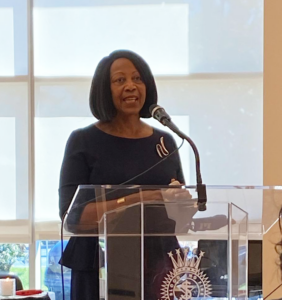Posted on September 8, 2023


By Nina Peckman, Esq.
ACNJ Staff Attorney
Specialized in Education Law
The school year has begun and I am already getting calls from parents with concerns about IEP implementation issues or about a lack of progress. Parents should not hesitate to contact their child’s study team (CST) case manager with any concerns and make a written request for a meeting. This can include concerns about how the latest IEP will be implemented or if you do not agree with everything in the latest IEP. You can request a short IEP review meeting at any time. Typically, a meeting four to six weeks after school starts would allow time to assess how the IEP is working.
Here are some factors to keep in mind in speaking with the child study team:
- Has your child received any new diagnosis or change in medication? Remember to provide any updates to the CST with a copy of new relevant evaluation reports/medications. A meeting may be necessary to discuss potential IEP changes and modifications to the IEP.
- Be sure to check your child’s IEP to see whether your child is due for CST re-evaluations – all the evaluations should be repeated at least every three years. Re-evaluations help ensure a child will progress. If they weren’t done or are due by January 2024, write to the case manager to request a meeting to discuss re-evaluations and sign consent forms.
Tips for 8th Graders and High School Students
Students approaching high school should begin receiving special education transition services to start planning for life after high school. Eighth graders interested in a vocational high school should find out NOW about the application process. In some counties, the deadline is December 31st. Be sure to discuss transition services at the annual review. If your child is 16, a transition plan should already be implemented.
Parents and students should know the graduation requirements, which should be found in the code of conduct. Students can fail classes due to excessive absences leading to loss of credits. To ensure your child is on track to graduate on time, request written confirmation of the student’s credit status from the CST case manager and guidance counselor. Meet with the CST case manager to agree on a written plan for how to make up loss of credits/ failed classes and to address reasons behind absences.
Is your student nearing high school graduation? By 11th grade, start getting information about school and community college prep resources from the guidance counselor and CST case manager. Speak with the disability offices of colleges/adult vocational programs to see if they provide the necessary supports. Note that some students may be eligible and benefit greatly from staying in school for one or more years through age 21. The annual review should include a discussion of program options after 12th grade, including options outside the high school. Parents may challenge a CST’s decision that a student is ready to graduate by filing for due process if this dispute cannot be resolved informally.
The most important things to ensure your child has a successful year is to first, stay informed and contact your child’s CST case manager as soon as you have a concern or need to provide updates. Second, know your child’s education rights and joe best to advocate for your child. Be sure to make any requests for meetings in writing. If you have any questions contact Nina Peckman at npeckman@acnj.org. For more information on education resources to help children with special needs and struggling students click here.




